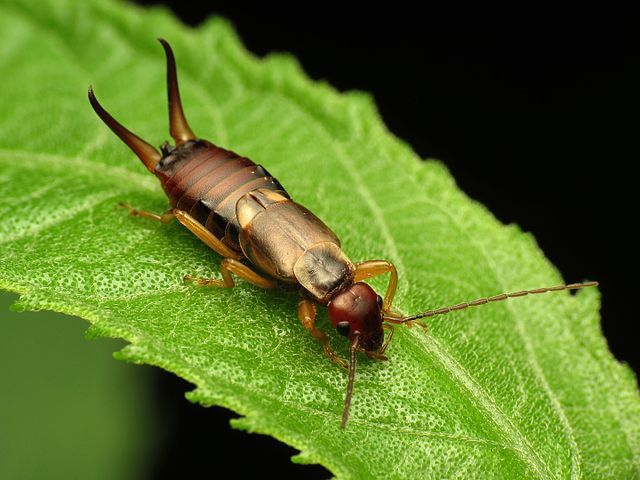-- Pest Library --
Earwig
Earwig Description
Earwigs are long, flattened insects, ranging from light reddish brown to black in color and are easily recognized by their “pinchers” forcep-like appendages on the end of the abdomen. Adults range in length from 1/4 to 1 inch in length.
Diet
Although they are scavengers, they feed mainly on dead and living insects, and decaying organic plant matter. Indoors, their food consists of sweet, oily and greasy foods.
Life Cycle & Reproduction
Female earwigs lay eggs in burrows (called chambers) 2 to 3 inches beneath the surface of the soil. Eggs are produced in clusters and hatch in about 2 weeks. Female earwigs stay with the eggs and young nymphs. Nymphs leave the nest in a few days and begin to develop by going through five stages over a 45 to 175 day period, depending on the temperature. All developmental stages are able to overwinter.
Habitat
Earwigs are active at night and seek dark moist places during the day such as underneath rocks, bark, and plant debris. At night, they can be found near lights. Earwigs will invade homes, particularly when outdoor environmental conditions become unfavorable (excess heat, cold or rainfall). Their flatten bodies can get through extremely small cracks and gaps in doors, windows, and the foundation. Indoors, they hide in cracks and crevices, or under furniture and carpeting.
Threat
Generally harmless, they feed mainly on arthropods and decaying organic matter. They can be a nuisance when they invade homes.










